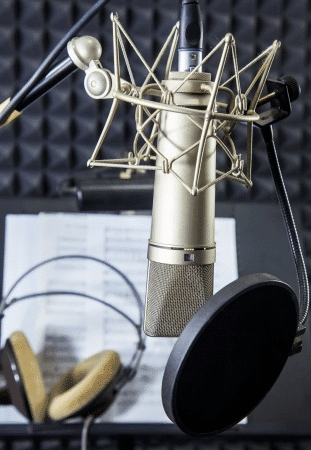Foolproof Vocal Recording pt. 1

While there are endless opinions and techniques for recording vocals, it’s actually easier than you think. The most important element isn’t technical at all. It’s getting the right performance. And that has mostly to do with the singer feeling comfortable and confident. While there are some tricks for coaxing the best performance out of a singer, we wanted to give you the basics on the technical side.
The following three suggestions will ensure that you get a good, clean sound when recording vocals:
Good Microphone
The quality of your microphone does make a difference on the quality of your vocal recordings. A large diaphragm condenser seems to be the popular choice for its ability to pick up range, nuance and detail. However, for singers who are a bit louder and brighter, a dynamic mic like a Shure SM7 or SM58 can also be a good option.
Once you have your mic selected, make sure that it’s placed at a good distance (on a stand, not held) from the vocalist. Take an extra few minutes to find the sweet spot.
Pop Filter
One of the fastest ways to ruin a good vocal take is to have pops from when the performer pronounces a “p” and blows wind into the mic's diaphragm. A pop filter is a cheap and essential tool for blocking the breath of the singer from going into the mic. Always use one.
Reflection Filter
In most cases, you’ll want minimize the acoustic effect of your room on the recording. This can be done by keeping the mic positioned away from a wall and using sound treatments. However, a good reflection filter can make a big difference, too. They start around $100, but do a top rate job of isolating the singer from the room’s reflections.
Always remember, don’t try to fix in your mixing and mastering what can be done in recording. If you follow these simple rules, 9 times out of 10 you’ll get a usable recording. Of course, you still need a good performance.




